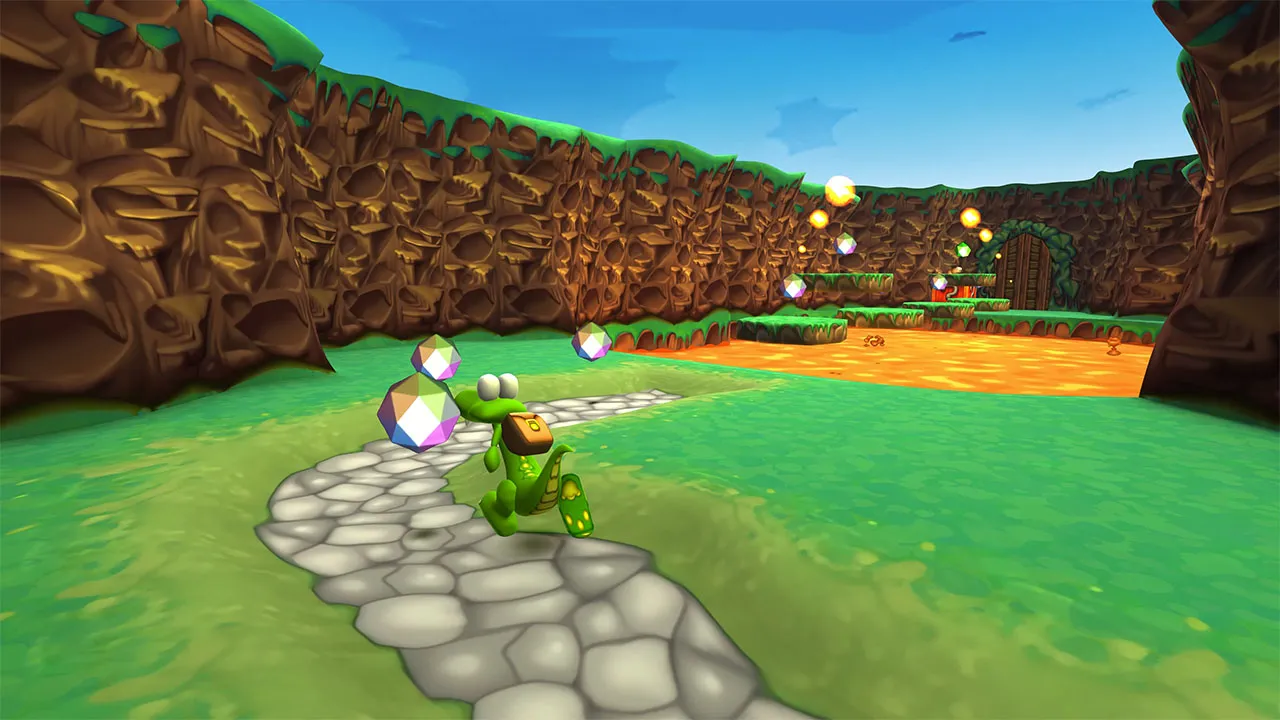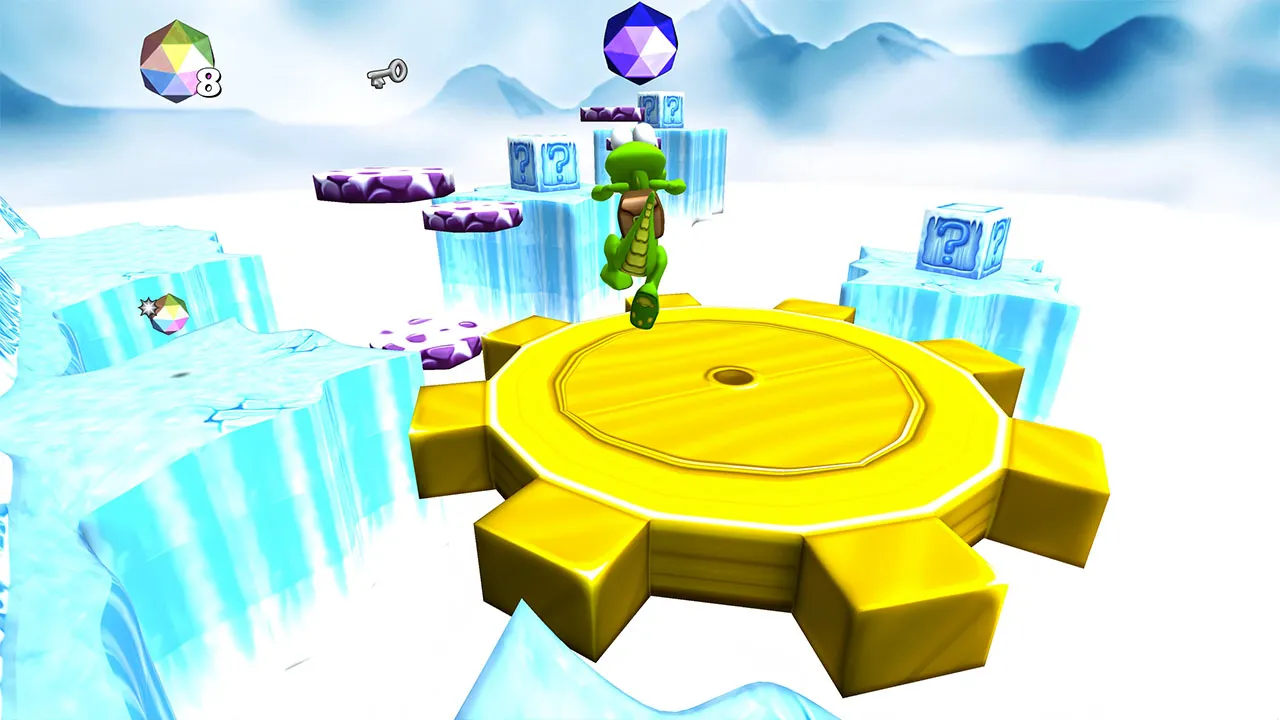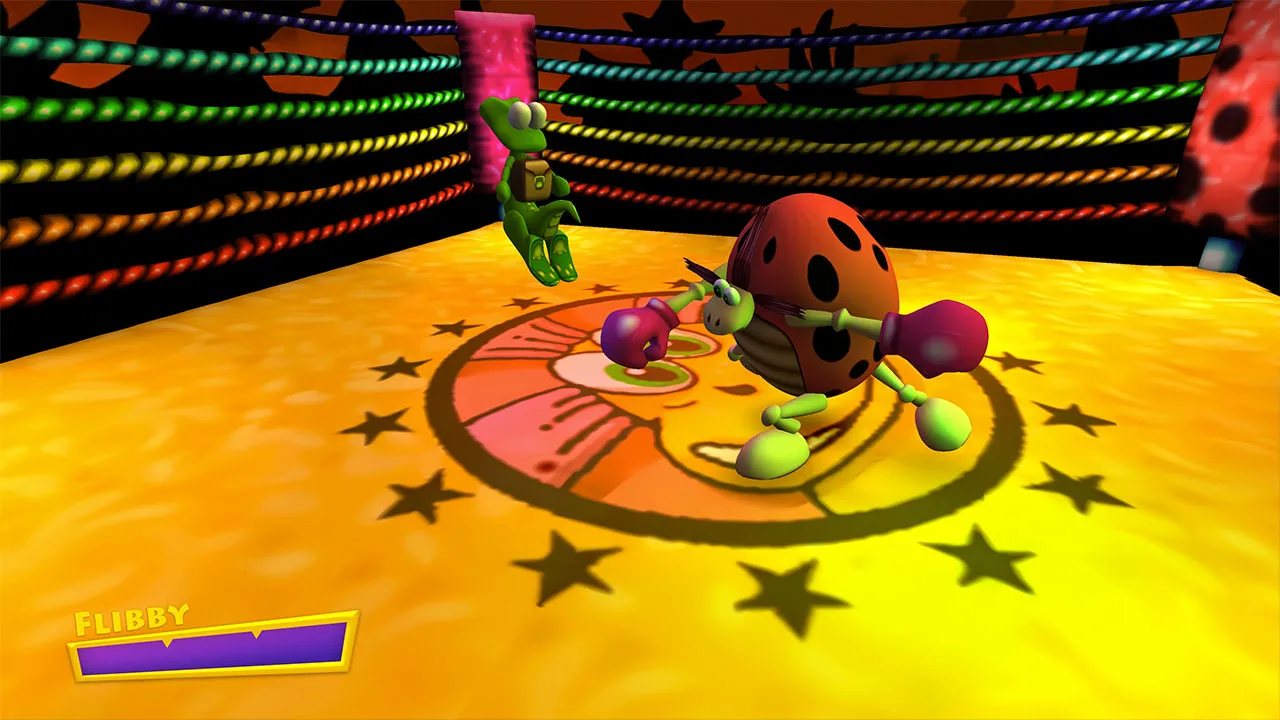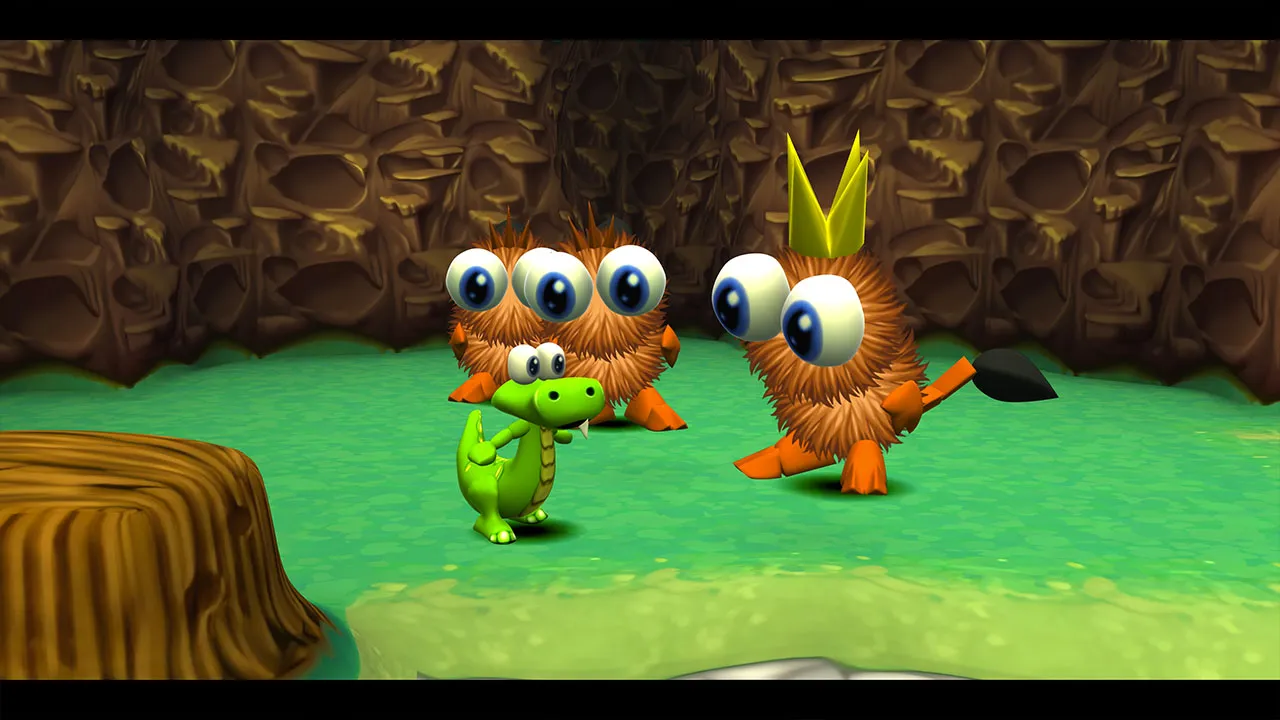Croc: Legend of the Gobbos reappears as a refreshed favorite from the late 90s, maintaining its original charm while welcoming a modern interface. The game situates a determined crocodile who sets out to free his cherished Gobbo companions—a quest that captures an innocent narrative spirit reminiscent of storied films from far-reaching cultures. Its colorful design and revised control system reveal shifts in technology that have allowed once-simple mechanics to become more refined.
This title draws from its cultural origins within a dynamic period of gaming in one region and meets the interests of audiences from various countries. Echoes of international cinema are apparent in its visual storytelling, where every level feels like a vignette in a larger anthology of youth and adventure.
The interplay between character movements and environmental challenges encourages comparisons with classic cinematic storytelling. Observers may find the game to be a mirror reflecting how vintage ideas are adapted in a present-day context, producing an experience that incites both nostalgia and curiosity.
Cultural Currents in Narrative and World-Building
Croc’s tale begins with a modest origin story: a hatchling cast adrift who finds sanctuary among a curious community known as the Gobbos. This modest beginning sets the stage for an adventure that plays with familiar childhood memories while introducing clear updates. The game presents Croc’s transformation from an innocent survivor into a determined rescuer, challenging a new force that threatens the peaceful existence of his newfound family.
The forces of opposition emerge in the form of enigmatic villains whose designs carry hints of a bygone era while embracing modern aesthetics. Early encounters with these antagonists establish an immediate sense of urgency and set high stakes, yet they refrain from ruining surprises hidden further along in the narrative. Croc’s quest to save his allies is interwoven with the subtle tension of fighting against overwhelming odds, echoing a narrative style seen in international storytelling where resilience is tested in unexpected moments.
The game unfolds across a series of distinct settings: lush forests, treacherous ice landscapes, arid deserts, forbidding castles, and a secret island filled with mystery. Each locale offers a separate visual charm and strategic obstacle, inviting comparisons with cinematic productions from various cultures that use setting as a character in its own right. The atmosphere marries nostalgic simplicity with updated visual effects that honor a classic design yet speak to contemporary tastes.
Croc himself comes across as spirited and dynamic, with updated movements and fresh expressions that offer a glimpse into his evolution. The Gobbos, serving as both narrative beacons and playful challenges, add texture to a story that speaks to themes of identity, shared heritage, and cultural transformation, leaving much open to individual interpretation.
Mechanics in Motion: A Cross-Cultural Analysis
Croc’s control system invites comparisons across regions where traditional gaming meets modern design. The character exhibits a wide range of moves—jumps, butt-slams, tail spin attacks, swift 180-degree reversals, climbing, swinging, and swimming—that integrate smoothly into both combat and spatial challenges. These moves serve as a language that speaks to fans familiar with early platformers, while updated animations and responsiveness offer a fresh experience for a global audience.
The remaster provides two distinct control schemes. One option employs a modern full analog system that grants smooth and fluid movement, enhancing the timing of high-stake maneuvers during intricate platforming segments. Another choice mirrors the original tank-style D-pad inputs, invoking nostalgia for those accustomed to 90s gameplay while delivering a different sensory experience. Each option can be selected based on personal taste; analog controls cater to precision and speed, whereas the retro layout appeals to traditionalists who treasure the mechanics of earlier generations.
Camera movements and improved collision detection are technical improvements that contribute to a more refined feel. The revised physics reduce the frustration of mistimed jumps and bolster the sense of control during fast-paced combat sequences. This efficiency becomes evident when facing moving platforms and swinging obstacles, moments that require precise timing and coordination.
The game’s design gradually introduces challenging segments, ensuring that casual players enjoy the experience while seasoned individuals find satisfying tests of skill in later areas. Supplementary settings, such as toggling between retro and updated visuals or applying nostalgic filters, allow players a choice of presentation. However, the absence of features like save states or rewind options does impact the pacing and may require extra perseverance during repeated attempts.
Level Design and Environmental Challenges
The structure of this game unfolds in ordered segments connected by distinct doorways that serve as portals between thematic settings. Each segment carries its own design language, inviting players to explore side routes and hidden areas that reward curiosity with surprises in the form of collectibles and secret passages. The design mirrors techniques found in traditional storytelling from various cultures, where a linear path conceals optional detours that hint at deeper lore.
The environments range from wooded enclaves and treacherous ice fields to arid deserts, imposing fortresses, and a mysterious crystal island. Each setting is crafted with its own visual signature and mechanical quirks. For instance, ice stages challenge the player with slippery surfaces that demand precise timing, while desert levels feature platforms that shift subtly, evoking the unpredictability found in nature-inspired art. The castle areas impose their own tension through dim lighting and claustrophobic corridors, contrasting sharply with the open, reflective spaces of the secret island.
In terms of gameplay, players encounter an assortment of obstacles including moving platforms, swinging spikes, and puzzles that require returning to previous sections for hidden rewards. Successful navigation depends on timing and skill, with mini-boss encounters punctuating the flow at strategic intervals. The design relies on deliberate contrasts between difficulty spikes and accessible segments, ensuring that each segment carries its own flavor of challenge and satisfaction.
Subtle background animations and environmental hazards enrich the scenery, offering insights into the game’s lore through visual cues that speak across cultural divides. This layered design invites players to consider how simple paths can hint at intricate cultural narratives while challenging them to piece together hidden stories along the way.
Aesthetic Fusion: Visuals, Audio, and Cultural Resonance
Croc: Legend of the Gobbos presents its remaster with refreshed visual and auditory elements that recall its heritage while addressing contemporary tastes. The remaster offers updated character models and refined textures paired with improved lighting designed for modern high-resolution displays. A dual-mode option enables players to select between the original retro visuals and a renewed presentation featuring CRT and VGA filters—a nod to the past alongside a modern upgrade.
Visuals reflect an early 3D charm characterized by simple geometry and playful color schemes reminiscent of the pioneering digital art of the 90s. At the same time, sharper renderings and clear details satisfy current aesthetic expectations. This visual dialogue encourages comparisons with international film techniques; it echoes cinematic styles that blend nostalgic design with current visual execution, sparking thoughts on how artistic traditions evolve in digital form.
The audio design contributes significantly to the experience. The soundtrack, memorable and contextually tuned, offers rhythmic changes as players progress through distinct environmental zones. Sound effects provide immediate feedback—such as the crisp note accompanying each jump or the subtle alert signaling nearby hazards—which reinforces the game’s pace and emotional atmosphere. Audio enhancements ensure that modern playback devices produce a sound that is rich and multilayered, heightening immersion in each area.
Combined, these refined visuals and enhanced audio cultivate an aesthetic that bridges the game’s cultural roots with an approach refined by technological progress. This fusion invites a reflection on the evolution of creative expression within the sphere of digital entertainment, urging players to ponder the balance between inherited traditions and modern reinterpretations.
Cultural Archives and Enhanced Memories
The remaster introduces improvements that shift the experience into a modern era while respecting its origins. Analog control options and refined camera movement reduce earlier frustrations. The interface now offers visual toggles that let players choose between classic renderings and the sharper, updated textures of today. This adjustment honors the vintage aesthetic while addressing modern display standards, providing an experience that feels both familiar and refreshed.
A dedicated bonus archive, creatively labeled, enriches the project with a wealth of behind-the-scenes content. Players can access concept sketches, character design sheets, technical documentation, and early animated tests. Interviews with original creators and current staff reveal insights on the game’s evolution from its early days to its present form. Interactive elements, such as archival advertisements and merchandise displays, alongside a playful tutorial on crafting a crocodilian figure, invite fans to explore the game’s cultural heritage.
These extras integrate within the main game by unlocking hidden rewards and background details that deepen the experience. The museum section serves as a repository for historical content and may trigger in-game events that reward curious exploration. Such features prompt reflections on how cultural memory is retained in digital art and entertainment. The presentation raises questions about the preservation of regional artistic practices and societal values in a medium that continuously adapts to new technologies.
Overall Experience and Replayability
The remaster revitalizes a classic while maintaining its original spirit, offering a refined version that respects its cultural origin and history. Updated controls and clearer visuals create an experience that feels both respectful to longtime fans and accessible to newcomers. The addition of a bonus archive and hidden challenges enriches play sessions, as players discover extra characters, secret collectibles, and special museum entries that subtly build upon the game’s past.
For those who treasure nostalgic echoes, the familiar aesthetic and sound evoke memories of early 3D platformers, reflecting regional creative traditions. New players find comfort in the modern control system that provides smoother, responsive gameplay while preserving the straightforward charm of the classic design. Multiple control schemes allow players to tailor their experience, ensuring that each run through the game presents opportunities to uncover previously unseen details and hidden paths.
This release also serves as a reminder of the inventive spirit that shaped the medium during its early stages, preserving a cultural heritage that continues to influence contemporary platforms. The game’s layered structure invites repeated play, as every visit uncovers subtle hints about its development and historical context, leaving space for further interpretation and exploration.
The Review
Croc: Legend of the Gobbos
Croc: Legend of the Gobbos Remaster is a charming update that preserves its nostalgic roots while delivering smoother controls, refined visuals, and a trove of bonus content. The gameplay remains engaging and thoughtful, inviting both longtime fans and newcomers to uncover hidden challenges and subtle historical details. Though it carries limitations typical of its era, the improved presentation and layered design offer a satisfying experience that bridges past and present.
PROS
- Faithful remaster that preserves nostalgic charm
- Enhanced visuals suited to modern displays
- Smoother, responsive controls with dual options
- Rich bonus content with historical archives
- Layered level design with hidden challenges
CONS
- Limited evolution in gameplay mechanics
- Some levels may feel repetitive
- Absence of save state and rewind features





















































